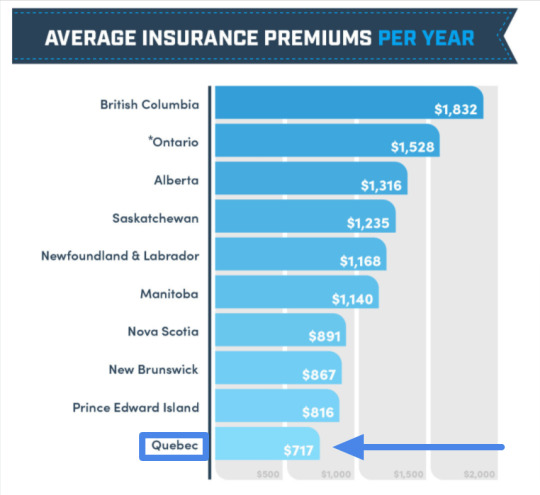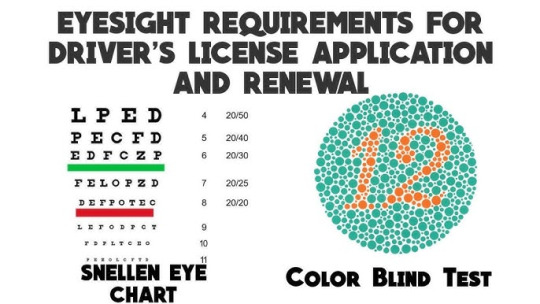Don't wanna be here? Send us removal request.
Text
How Canada’s Push for Road Decarbonization Affects Licensing & Vehicle Choice

Canada is making significant strides toward reducing greenhouse gas emissions, and the transportation sector is a key focus in this effort. The government’s push for road decarbonization is influencing not only the types of vehicles Canadians drive but also aspects of driver licensing and training. Here’s how this shift could affect new and current drivers across the country.
The Shift Toward Electric and Low-Emission Vehicles
One of the main goals of Canada’s road decarbonization strategy is to encourage the adoption of electric vehicles (EVs) and other low-emission alternatives. This shift means more drivers will be operating EVs, hybrids, and hydrogen-powered cars, which differ significantly from traditional gasoline vehicles in terms of operation and maintenance.
Impact on Driver Licensing
As electric vehicles become more common, driver education programs and licensing tests are adapting. Learners need to understand the unique features of EVs, such as regenerative braking and silent operation, which require new skills and awareness. Some provinces are incorporating these elements into their driver training curriculum, making knowledge of eco-friendly driving practices an essential part of licensing.
Vehicle Choice and Driving Tests
With road decarbonization, learners may face choices regarding the type of vehicle used for their driving tests. Some regions now allow the use of electric or hybrid vehicles for road tests, but it’s important to confirm local policies. Preparing with an electric vehicle might require additional practice, especially around managing battery levels and understanding EV-specific controls.
Incentives and Regulations
To support this transition, the Canadian government offers various incentives for purchasing electric and low-emission vehicles. Additionally, stricter emissions regulations are encouraging drivers to switch sooner rather than later. These changes may also influence insurance rates and vehicle registration requirements, making it crucial for new drivers to stay informed.
Preparing for the Future of Driving in Canada
For those studying for their driving test or considering a vehicle purchase, it’s beneficial to use trusted resources such as licenseprep.ca to stay updated on new rules and prepare accordingly. Whether you’re learning road signs, local driving laws, or understanding new vehicle technologies, being well-prepared helps ensure a smooth transition to greener driving.
To learn more about driving rules and prepare confidently for your test, visit licenseprep.ca.
#RoadDecarbonization#ElectricVehiclesCanada#DrivingTest2025#GreenDriving#CanadaTransport#LicensePrep#EcoFriendlyDriving
0 notes
Text
The Rise of Virtual Driving Lessons in Canada: Do They Work?

The world of driver education in Canada is evolving rapidly with the rise of virtual driving lessons. Thanks to advances in technology and the recent push for remote learning options, many aspiring drivers are turning to online platforms to prepare for their driving tests. But the question remains: do virtual driving lessons really work?
What Are Virtual Driving Lessons?
Virtual driving lessons use video calls, simulators, and online resources to teach the theory and practical knowledge required for driving. These lessons often include modules on traffic rules, road signs, hazard perception, and even simulated driving experiences. They allow learners to study at their own pace, from the comfort of their home.
Benefits of Virtual Driving Lessons
Flexibility: Learners can schedule sessions around their busy lives without the need to commute.
Cost-Effective: Virtual lessons often cost less than traditional in-car instruction.
Access to Quality Resources: Many platforms offer updated content tailored to Canadian driving laws.
Builds Confidence: Simulators and interactive tools help students practice decision-making and reaction skills before hitting the road.
Limitations to Consider
While virtual lessons excel in teaching theory and safe driving principles, they cannot fully replace the hands-on experience of driving a real vehicle. Learning practical skills such as steering, parking, and navigating complex traffic situations requires actual time behind the wheel with a qualified instructor.
How to Maximize Your Virtual Driving Lessons
To get the most out of virtual learning, combine online theory lessons with supervised in-car practice. Use platforms like licenseprep.ca to study road signs, local rules, and prepare confidently for your tests. This hybrid approach balances convenience with practical experience, increasing your chances of passing the driving test on your first attempt.
The Future of Driver Education in Canada
Virtual driving lessons are likely to become an integral part of driver education in Canada, especially for theory preparation. However, they should complement, not replace, traditional driving practice. As technology continues to improve, expect more immersive and interactive tools that can enhance learning even further.
#VirtualDrivingLessons#DrivingTestCanada#DriverEducation#OnlineLearning#LicensePrep#DrivingTips#CanadianDrivers
0 notes
Text
New Vision Screening Requirements for Seniors in Canada - 2025 Update

As of 2025, Canada has implemented significant updates to driving regulations for seniors, focusing on medical assessments and license renewal processes. These changes aim to enhance road safety while allowing seniors to maintain their independence.
1. Age-Based Renewal Frequency
Ages 65–74: Seniors in this age group are generally required to renew their driver’s licenses every two years.
Ages 75 and above: Annual renewals may be mandated, depending on provincial regulations and individual health status.
2. Mandatory Medical Assessments
To ensure fitness to drive, seniors may undergo various medical evaluations during the renewal process:
Vision Tests: Assessing clarity of vision, especially under low-light conditions and the ability to read road signs.
Cognitive Function Tests: Evaluating memory, attention, and decision-making skills to detect potential impairments.
Physical Fitness Assessments: Checking mobility, reflexes, and the ability to operate vehicle controls safely.
Medical Condition Reviews: Identifying health issues such as heart disease, diabetes, or neurological disorders that could impact driving abilities.
3. Renewal Process Enhancements
Seniors are required to visit their local Service Centre in person to renew their licenses. During the visit, they must provide up-to-date medical information and may need to undergo the aforementioned assessments.
4. Ontario-Specific Procedures
In Ontario, drivers aged 80 and over must renew their licenses every two years. The renewal process includes:
Attending a group education session
Completing vision and cognitive screening exercises
Reviewing driving records
If necessary, a road test may be required.
5. Penalties for Non-Compliance
Failure to comply with the new regulations can result in fines, license suspension, or the requirement to undergo further medical evaluations.
For more detailed information, visit licenseprep.ca.
#CanadaDrivingRules2025#SeniorDriversCanada#VisionScreening#LicenseRenewal#RoadSafety#SeniorDriving#MedicalAssessments
0 notes
Text
Is Insurance Now Required Before Booking a Driving Test in Canada?

As of 2025, the requirement for insurance before booking a driving test in Canada varies by province and territory. While some jurisdictions mandate proof of insurance at the time of booking, others require it only on the day of the test. It's essential for new drivers to understand the specific requirements in their region to ensure a smooth testing experience.
Ontario
In Ontario, when booking a G2 road test, proof of insurance is not required at the time of booking. However, on the day of the test, the vehicle used must be insured. The insurance policy does not need to be in the name of the test candidate; it can be under a family member's or friend's name, provided the vehicle is legally insured and roadworthy. It's advisable to check with the insurance provider to ensure that the policy covers the driver for the test.
British Columbia
In British Columbia, when preparing for a road test with the Insurance Corporation of British Columbia (ICBC), you need to bring a safe, reliable, and insured vehicle. While proof of insurance is not explicitly required at the time of booking, it is essential to have valid insurance on the day of the test. Additionally, if you're using a vehicle from a car-sharing co-op or company and are not the named member, you must provide an original letter from the company authorizing you to use the vehicle for the road test.
Newfoundland and Labrador
In Newfoundland and Labrador, when booking a road test, you must provide proof of insurance and a copy of the vehicle registration. This requirement ensures that the vehicle used for the test is legally insured and registered.
Other Provinces and Territories
Requirements can vary across other provinces and territories. It's recommended to consult the local licensing authority's website or contact them directly to understand the specific insurance requirements for booking a driving test in your area.
Conclusion
While insurance is a mandatory requirement for the vehicle used during a driving test in Canada, the timing of when proof of insurance is needed depends on the province or territory. New drivers should familiarize themselves with the specific requirements in their region to ensure they meet all necessary criteria for a successful road test. For more information and resources on preparing for your driving test, visit licenseprep.ca.
#CanadaDrivingTest2025#InsuranceRequirements#NewDriverCanada#RoadTestPreparation#DrivingInCanada#LicensePrep#VehicleInsurance
0 notes
Text
Can You Take the Canadian Driving Test with an Adaptive Vehicle in 2025?

As Canada continues to advance in accessibility, the question arises: Can you take the Canadian driving test using an adaptive vehicle in 2025? The answer is yes—but with some essential conditions and preparations.
What Is an Adaptive Vehicle?
An adaptive vehicle is modified to meet the needs of individuals with physical disabilities. These modifications might include hand controls, pedal extenders, steering knobs, or wheelchair lifts—each designed to enable safer and more independent driving.
If you're looking to learn the rules and prepare confidently, use licenseprep.ca to study road signs, practice tests, and understand Canadian driving laws.
Eligibility for Driving Tests
In most provinces and territories, individuals are allowed to use an adaptive vehicle for their road test under the following conditions:
Medical Clearance: You’ll likely need a medical exam and a recommendation stating you're fit to drive with adaptations.
Vehicle Approval: Your vehicle will need to be inspected to ensure all modifications are safe and functioning correctly.
License Codes: After passing, your license may include restriction codes indicating that you’re required to drive with certain adaptive devices.
How to Prepare for the Test
Find a Certified Driving School Look for instructors or schools experienced in training individuals using adaptive equipment. They can help you become comfortable with the modified vehicle and teach you best practices.
Practice with Purpose Practice regularly in various driving conditions. The goal is to ensure you're confident with your vehicle’s features and understand road rules thoroughly.
Know Provincial Differences Testing rules and accommodations can vary between provinces. It’s best to check directly with your provincial licensing office or study through trusted resources like licenseprep.ca.
Final Thoughts
Yes, you can absolutely take your driving test in an adaptive vehicle in Canada. The key is preparation, both physically and mentally. With the right support, accessible instruction, and legal clarity, your path to driving independence is well within reach.
#AdaptiveDrivingCanada#InclusiveMobility#DrivingTest2025#AccessibleTransportation#DisabilityRights#AdaptiveVehicles#CanadianDriversLicense
1 note
·
View note
Text
How to Prepare for the Canadian Hazard Perception Test

If you're working toward your full driver’s license in Canada or applying for a commercial license, you may be required to take the Hazard Perception Test (HPT). This test evaluates your ability to spot and react to potential dangers while driving—a crucial skill for road safety.
Here’s how you can prepare effectively and improve your chances of passing on the first try.
What Is the Hazard Perception Test?
The HPT is a video-based test that simulates real-world driving situations. It measures your ability to:
Recognize developing hazards
Respond appropriately and in time
Prioritize risks under pressure
You’ll watch short clips from a driver’s point of view and will need to click when you notice a potential hazard forming—such as a pedestrian crossing or a car merging unexpectedly.
Who Needs to Take It?
Some provincial licensing systems, like Ontario’s commercial or graduated licensing programs, include an HPT component.
New and returning drivers, especially those exchanging a foreign license, may be required to pass this test based on provincial rules.
Top Preparation Tips
1. Understand What Counts as a Hazard
Not every movement on the road is a threat. Learn the difference between a developing hazard and routine motion. Hazards typically involve:
Pedestrians stepping off the curb
Cyclists swerving
Vehicles braking suddenly or turning without signal
2. Practice with Mock Tests
Use platforms like licenseprep.ca to practice simulated hazard perception videos. These interactive tools mimic the real test format and help train your eye for potential threats.
3. Focus on Timing
Early detection matters. Don’t click too soon or too late. Practice identifying when a hazard begins to form—not when it’s obvious.
4. Stay Calm Under Pressure
The test is designed to be fast-paced. The more familiar you are with driving environments through practice tests, the more naturally you’ll respond.
What to Expect on Test Day
The HPT is typically done on a computer at a test centre.
You’ll be given instructions and a few sample questions before the real test begins.
There’s usually no "pass/fail" sound per question—you’ll receive your overall results at the end.
Use the Right Tools to Prepare
Success starts with the right prep tools. At licenseprep.ca, you’ll find interactive hazard perception tests, provincial driving laws, and full exam preparation resources. It’s the smart way to prepare with confidence.
Final Thoughts
The Hazard Perception Test is more than just a license requirement—it’s a key part of becoming a safe and responsible driver in Canada. Prepare thoroughly, practice often, and go into your test feeling confident and alert.
#HazardPerceptionTest#CanadianDrivingTest#DrivingLicenseCanada#NewDriverTips#licenseprep#RoadSafetyCanada#GTestPrep
1 note
·
View note
Text
Understanding Penalties for Driving Offenses in Canada

Whether you're a new driver or have years of experience behind the wheel, it’s important to understand that driving offenses in Canada come with serious consequences. From speeding tickets to impaired driving, penalties can impact your license, insurance, and even your ability to drive legally.
This guide breaks down the most common penalties for driving offenses in Canada—and how you can avoid them.
Common Driving Offenses and Their Penalties
1. Speeding
Fines vary by province and the amount you exceed the speed limit.
Demerit points (often 3–6) added to your license.
Repeated offenses can lead to license suspension.
2. Distracted Driving
Fines can be up to $1,000 or more.
3–5 demerit points.
New drivers (G1/G2) may face suspensions or license cancellations.
3. Impaired Driving
Criminal offense.
Immediate license suspension, vehicle impoundment, and criminal charges.
Long-term effects on insurance and employment.
4. Driving Without Insurance
Fines up to $10,000.
Possible vehicle impoundment and license suspension.
5. Careless or Dangerous Driving
Charges can lead to court appearances, hefty fines, and even jail time.
Demerit points and extended license suspensions.
Graduated Licensing and Penalties
If you’re a new driver in the G1 or G2 stage, penalties are often stricter. One mistake—like driving without a fully licensed passenger as a G1—can result in:
Immediate suspension
Restarting your graduated license process
Increased insurance premiums
How to Protect Your Record
Staying informed and proactive is your best defense. Use licenseprep.ca to:
Understand local driving laws and demerit systems
Practice road scenarios with real test-style questions
Prepare confidently for your exams and avoid costly mistakes
What Happens If You Accumulate Demerit Points?
Demerit points stay on your record for 2 years. If you collect too many:
You’ll receive a warning letter
You may have to attend an interview
Your license can be suspended
Final Thought
Driving is a privilege—and keeping your record clean helps you maintain that privilege affordably and safely. Know the rules, drive smart, and be aware of the consequences. If you're unsure about any regulations or preparing for your road test, licenseprep.ca is a trusted place to start.
#DrivingPenaltiesCanada#NewDriverAwareness#CanadianDrivingLaws#LicenseSuspension#DemeritPoints#SafeDrivingCanada#LicensePrep
1 note
·
View note
Text
How to Handle a Roadside Inspection in Canada

Roadside inspections are routine checks carried out by police or transportation authorities to ensure drivers and vehicles are following the law. If you’re new to driving in Canada, especially as a G2 or full license holder, it’s essential to know how to handle a roadside inspection calmly and legally.
Here’s everything you need to know so you're prepared if you’re ever pulled over.
What Is a Roadside Inspection?
A roadside inspection typically involves checking:
Your driver’s license and registration
Proof of insurance
Vehicle condition (lights, tires, emissions)
Your sobriety or potential signs of impairment
Vehicle documentation for commercial drivers
These inspections can happen randomly or when an officer has reasonable cause to stop you.
What to Do If You’re Pulled Over
1. Pull Over Safely
Use your turn signal and stop on the shoulder or nearest safe location. Remain calm and keep both hands on the wheel.
2. Stay Inside the Vehicle
Unless instructed otherwise, stay in your car. Roll your window down and be polite and respectful to the officer.
3. Provide Requested Documents
You’ll typically be asked for your driver’s license, proof of insurance, and vehicle registration. Always carry these when driving.
What Officers Are Looking For
A valid and appropriate license for the class of vehicle
Up-to-date insurance and registration
Signs of impairment, fatigue, or distraction
Vehicle safety compliance
Even a minor infraction can lead to fines or warnings—especially for new drivers still under the graduated licensing system.
Know the Rules with licenseprep.ca
If you're preparing for your test or learning about Canadian driving laws, licenseprep.ca helps you study road rules, understand penalties, and build confidence behind the wheel.
Can You Refuse a Roadside Inspection?
Refusing to cooperate during a lawful inspection can result in serious legal consequences, including fines or arrest. In some cases, such as sobriety checks, refusal to comply may carry the same penalty as a failed test.
Final Advice
Roadside inspections aren’t meant to scare you—they’re meant to keep roads safe. Stay calm, be respectful, and know your rights and responsibilities. Being prepared is key, especially for new or nervous drivers.
#RoadsideInspectionCanada#NewDriversCanada#DrivingInCanada#LicensePrep#CanadianDrivingTips#KnowYourRights#G2Drivers
1 note
·
View note
Text
How Insurance Rates Change After Getting Your First Canadian Driver’s License

Getting your first driver’s license in Canada is an exciting milestone—but it also comes with a new responsibility: auto insurance. Whether you’ve just passed your G1 or G2, you might be wondering: how much will insurance cost, and how will your rates change over time?
Here’s a guide to understanding how insurance rates work for new drivers in Canada, and how you can keep your premiums low as a beginner.
Why Are Insurance Rates Higher for New Drivers?
New drivers are considered higher risk because they have little to no driving history. Insurance companies typically base premiums on:
Age and experience
Driving history
Type of vehicle
Where you live
Frequency of driving
Since new drivers haven’t yet proven themselves on the road, they usually face higher insurance rates—especially if they are under 25.
What Happens Right After You Get Your License?
Once you get your G1 or G2, you must either:
Be added to a parent or guardian’s policy, or
Purchase your own insurance policy if you own a vehicle.
G1 drivers often don’t need full coverage if they’re supervised while driving, but G2 drivers who can drive alone will need full liability coverage at minimum.
When Do Rates Start Going Down?
Your insurance rates can start to decrease after:
1–2 years of safe driving
Completing an accredited driver’s education course
Turning 25 (age matters in the insurance world)
No tickets or accidents on your record
You can speed up this timeline by preparing well and passing your tests the first time using resources like licenseprep.ca, which helps you understand road rules and safe driving practices.
What Can You Do to Lower Your Insurance?
Take an approved driver’s education course
Avoid accidents and traffic violations
Drive a car that’s cheaper to insure
Bundle your insurance if possible
Ask about student or good-driver discounts
Many insurers offer incentives for clean records and completed training—so it pays to learn smart from the start with tools like licenseprep.ca.
Final Thoughts
Your first car insurance quote might be a bit of a shock, but it gets better. With time, safe driving, and the right knowledge, you’ll see your rates drop steadily. Think of it as part of the journey—and a reason to build good habits from day one.
#FirstTimeDriverCanada#CanadianCarInsurance#NewDriverTips#InsuranceForBeginners#LicensePrep#SaveOnInsurance#G2DrivingCanada
0 notes
Text
Understanding Canada’s New Distracted Driving Laws and Their Impact on New Drivers

Distracted driving is one of the leading causes of road accidents in Canada, and the government is taking it more seriously than ever. With new laws and tougher penalties in place, new drivers need to be especially aware of what counts as distracted driving—and how it can affect their ability to get or keep a license.
Here’s what you need to know about Canada’s updated distracted driving laws and how to stay safe (and legal) on the road.
What Is Distracted Driving?
Distracted driving includes any activity that diverts attention from driving, such as:
Using a mobile phone (even at a red light)
Eating or drinking
Adjusting your GPS or radio
Talking to passengers
Looking away from the road for too long
But the most serious—and most targeted—form is texting or using handheld electronic devices while driving.
What Do the New Laws Say?
Laws vary slightly by province, but here are some updated common elements across most of Canada:
Use of handheld devices is prohibited at all times while driving, even when stopped at a light.
First-time offenses can result in fines up to $1,000, 3–5 demerit points, and in some provinces, license suspension.
G1 and G2 (learner and novice) drivers face stricter penalties, including longer suspensions and delayed graduation to the next license level.
How This Impacts New Drivers
For new drivers, even one distracted driving ticket can have serious consequences:
You may lose your G1 or G2 license temporarily.
Your progress through the graduated licensing system can be delayed.
Your car insurance rates may increase.
You could be required to restart the licensing process in some cases.
Learn the Rules with licenseprep.ca
Avoid surprises on your test and on the road. Study the rules around distracted driving and more with easy-to-follow guides and practice tests at licenseprep.ca.
Final Advice
Distracted driving is not just about texting—it’s anything that takes your focus off the road. For new drivers especially, staying fully alert and following the rules is essential for safety and license security. As the laws evolve, so should your driving habits.
#DistractedDrivingCanada#NewDriverTips#DrivingLawsCanada#GraduatedLicensing#SafeDriving#LicensePrep#CanadianRoadTest
0 notes
Text
Can You Drive a Motorcycle With a Regular Driver’s License in Canada?

Motorcycles are a fun, fuel-efficient, and adventurous way to travel—but they also require unique skills and safety precautions. If you're already a licensed driver in Canada, you might be wondering: Can I drive a motorcycle with my regular driver’s license?
The short answer is no—but let’s break down the details.
Motorcycle Licensing Is Separate from a Regular Driver’s License
In Canada, driving a motorcycle legally requires a specific class of license that is separate from the standard car license (usually a Class 5 or G license depending on the province). Each province and territory issues its own motorcycle license class and has its own process.
Common Motorcycle License Classes:
Ontario: M1 → M2 → M
British Columbia: Class 6
Alberta: Class 6
Quebec: Class 6A (or 6B, 6C depending on engine size)
If you only have a Class 5 or G license, you cannot legally operate a motorcycle on public roads.
What’s Involved in Getting a Motorcycle License?
The process typically includes:
A written knowledge test on motorcycle rules and safety
A vision test
One or more road tests on a motorcycle
Often, graduated licensing stages similar to regular licensing (e.g., M1 → M2 → M in Ontario)
Some provinces also require a motorcycle safety course, which is highly recommended even when not mandatory.
Can You Ride a Scooter or Moped With a Car License?
It depends on the province and the vehicle’s engine size:
Small mopeds or electric scooters under 50cc may be allowed with a regular driver’s license in some provinces.
Anything larger typically requires a Class 6 or equivalent motorcycle license.
Always check your provincial transportation authority to be sure.
Learn the Rules with licenseprep.ca
Driving laws may differ from what you're used to. Use licenseprep.ca to study road signs, local rules, and prepare for your tests confidently.
Final Thoughts
While your regular driver’s license qualifies you to drive a car, it does not allow you to legally ride a motorcycle in Canada. To enjoy the open road on two wheels, you’ll need to go through the proper licensing process. It ensures not only your safety but also the safety of others on the road.
#MotorcycleLicenseCanada#CanadianDrivingTest#LearnToRide#LicensePrepCanada#NewRidersCanada#MotorcycleSafety#DrivingTipsCanada#MClassLicense
0 notes
Text
What Are the Vision Standards for Driving in Canada?

Clear vision is essential for safe driving. In Canada, each province and territory has specific vision standards that individuals must meet to obtain or renew a driver’s license. If you're planning to take your driving test or renew your license, it's important to know what to expect during your vision assessment.
Let’s break down the requirements and what they mean for you as a new or returning driver.
Why Vision Matters
Driving requires sharp distance vision, peripheral awareness, and the ability to adjust to light changes. Poor vision can delay your reaction time, increase the risk of collisions, and compromise your ability to read signs or detect pedestrians.
That’s why Canadian licensing authorities require all drivers to meet basic visual standards before being allowed on the road.
General Vision Standards in Canada
While exact standards may vary slightly by province, the most common requirements are:
✅ Visual Acuity
Most provinces require 20/50 vision or better in at least one eye (with or without corrective lenses).
If your vision is worse than this, you may need an assessment from an eye specialist and may not be eligible to drive.
✅ Peripheral Vision
Adequate horizontal visual field, often 120 degrees or more, is required.
This ensures you can detect vehicles or hazards from the sides without turning your head.
✅ Corrective Lenses
You are allowed to use glasses or contact lenses to meet the required standard.
If you need them to pass the test, a condition will be added to your license stating you must wear them while driving.
What Happens During the Vision Test?
You’ll typically undergo a simple screening at the licensing office using a wall chart or vision-testing machine. If you don't pass, you’ll be referred to an optometrist or ophthalmologist for a more comprehensive exam.
Can You Drive with Vision Loss?
In some cases, yes. Drivers with limited vision in one eye (monocular vision) or those with certain eye conditions may still qualify for a license with restrictions, such as only being allowed to drive during daylight hours or within a specific area.
Learn the Rules with licenseprep.ca
Driving laws may differ from what you're used to. Use licenseprep.ca to study road signs, local rules, and prepare for your tests confidently.
Final Thoughts
Good vision is critical for safe and legal driving in Canada. Before you book your test or renew your license, make sure your eyesight meets the required standards. If you’re unsure, a quick visit to an eye doctor can save you time and stress down the road.
#DrivingVisionStandards#VisionTestCanada#NewDriversCanada#LicensePrepCanada#CanadianDrivingTest#RoadSafetyCanada#EyesightForDriving#DriverLicenseCanada
0 notes
Text
How Driving Simulators Help You Prepare for Your Road Test

Preparing for your road test in Canada can be both exciting and stressful—especially if it’s your first time behind the wheel. That’s where driving simulators come in. These high-tech tools are changing how new drivers train by offering a safe, controlled way to gain confidence before getting on the road.
So, how exactly can a simulator help you pass your test?
What Is a Driving Simulator?
A driving simulator is a computer-based setup that mimics real driving scenarios. It uses a steering wheel, pedals, and screens (sometimes even a motion platform) to give you the feeling of driving an actual car—without the risk.
You’ll face common situations like:
Traffic lights and stop signs
Lane changes and turns
Emergency braking
Hazard recognition in different weather conditions
Benefits of Using a Driving Simulator for Your Road Test
1. Builds Confidence in a Safe Environment
Simulators allow you to make mistakes without consequences. You can practice tricky situations until you get it right—something you might not be able to do on busy streets.
2. Improves Reaction Time
Many simulators include hazard perception tests, helping you sharpen your awareness and decision-making skills, which are key in passing your road test.
3. Prepares You for Real-World Scenarios
Driving simulators cover various conditions—rain, snow, night driving, and even highway merging. These are important, especially if your test might be during winter or in a busy city.
4. Reduces Test Anxiety
Because you’ve “seen it all” in a simulated world, you’ll feel less anxious on test day. It becomes muscle memory.
Can It Replace Real Driving Practice?
No. While simulators are a great learning tool, they can’t fully replace on-road practice. You'll still need to spend time behind the wheel of a real car to develop full control, spatial awareness, and comfort in real traffic.
Learn the Rules with licenseprep.ca
Driving laws may differ from what you're used to. Use licenseprep.ca to study road signs, local rules, and prepare for your tests confidently.
Final Thoughts
Driving simulators are a fantastic way to prepare for your Canadian road test. They help build skills, boost confidence, and reinforce safe driving habits. Combined with real driving practice and proper study, simulators can give you a solid edge to pass your test on the first try.
#DrivingSimulatorCanada#RoadTestPrep#NewDriversCanada#LicensePrepCanada#DrivingTipsCanada#DriverEducation#DrivingAnxietySupport#CanadianRoadTest
0 notes
Text
Should You Use a Dash Cam for Your Driving Test?

Dash cams have become popular tools for drivers across Canada. They record real-time footage of your drive, offering security and proof in case of accidents. But if you're preparing for your road test, you might wonder: Can or should you use a dash cam during your driving test in Canada?
Let’s explore the rules, pros, cons, and what examiners really think about them.
Are Dash Cams Allowed During a Driving Test?
In most provinces, dash cams are not explicitly banned during driving tests. However, there are important conditions:
The device must not be obstructive to your view or operation of the vehicle.
It must be hands-free and not interfere with your driving focus.
Audio recording is often not allowed during government-administered exams due to privacy laws.
Always check with the testing centre before your exam. Some locations may request that the camera be turned off during the test due to examiner privacy concerns.
Pros of Using a Dash Cam
Provides evidence in case of disputes or unfair test failure claims
Can be reviewed afterward to identify mistakes and improve
Gives peace of mind, especially for nervous test-takers
Cons to Consider
Might distract you if you're overly aware of being recorded
Some examiners may feel uncomfortable or see it as distrust
If the device obstructs your view, your test may be cancelled
What’s the Best Approach?
If you plan to use a dash cam, here are a few tips:
Mount it properly—away from your line of sight
Don’t touch it during the test
Ask permission before the test begins
Focus on your driving—not the recording
And remember, your performance is what really matters, not the tech in your car.
Learn the Rules with licenseprep.ca
Driving laws may differ from what you're used to. Use licenseprep.ca to study road signs, local rules, and prepare for your tests confidently.
Final Thoughts
While it’s generally acceptable to have a dash cam during your Canadian driving test, it’s best to use discretion. Check with your testing centre and ensure it doesn’t interfere with your safety or performance. At the end of the day, being well-prepared and confident is your best tool for success.
#DashCamCanada#DrivingTestTips#CanadianDriverTest#LicensePrepCanada#NewDriversCanada#DrivingExamCanada#RoadTestCanada#DriverSafety
0 notes
Text
What Happens If You Drive Without a Valid License in Canada?

Driving in Canada without a valid driver’s license might seem like a minor offense—but in reality, it’s a serious legal issue with consequences that can affect your finances, your criminal record, and your ability to get insured in the future.
Whether you're new to Canada, have an expired license, or simply haven’t gotten one yet, here’s what you need to know before getting behind the wheel.
What Is Considered “Driving Without a Valid License”?
There are several scenarios that can fall under this offense:
Driving without ever being licensed
Driving with an expired or suspended license
Driving with a license that’s not valid in Canada (e.g., an expired or non-recognized foreign license)
Failing to carry your license while driving
Each of these is treated differently, but all can lead to legal trouble.
The Legal Consequences
The exact penalties vary by province, but generally include:
1. Fines
Most provinces impose fines ranging from $200 to over $1,000 for driving without a valid license. In some cases, the fine may be higher for repeat offenders.
2. Vehicle Impoundment
In provinces like Ontario and British Columbia, your vehicle can be impounded on the spot if you’re caught driving without a license.
3. Court Appearance and Criminal Charges
In more serious cases—especially if your license is suspended or revoked—you could face criminal charges, mandatory court appearances, and even jail time.
4. Insurance Complications
If you're in an accident while driving unlicensed, your insurance will likely be void. You could be held personally liable for all damages and injuries, which can cost tens of thousands of dollars.
What If You Just Forgot Your License?
Forgetting your license at home is different from driving without one entirely. While you might still face a fine (usually lower), you often have the chance to prove your license is valid afterward. Still, it’s best to never take the risk.
Learn the Rules with licenseprep.ca
Driving laws may differ from what you're used to. Use licenseprep.ca to study road signs, local rules, and prepare for your tests confidently.
Final Thoughts
Driving without a valid license in Canada can have severe and lasting consequences. If you’re new to the country or unsure of your license status, it’s essential to clarify and follow provincial requirements. Whether you're a resident, visitor, or newcomer—make sure you're licensed before you drive.
#UnlicensedDrivingCanada#CanadianDrivingLaws#DrivingWithoutLicense#LicensePrepCanada#RoadSafetyCanada#DrivingPenaltiesCanada#NewDriversCanada#DrivingInCanada
0 notes
Text
What to Expect During a Functional Driving Assessment in Canada

If you’ve been referred for a functional driving assessment in Canada, you may feel anxious or uncertain — especially if your ability to drive safely is being questioned. But there’s no need to panic. These assessments are designed to evaluate whether you can drive safely and confidently, often following a medical condition, injury, or age-related concern.
Here’s a complete guide to help you understand what a functional driving assessment involves, who needs it, and how to prepare.
What Is a Functional Driving Assessment?
A functional driving assessment (FDA) is a comprehensive evaluation of your physical, cognitive, and visual abilities to determine if you're fit to drive.
It’s often required when:
You have a medical condition (e.g., stroke, epilepsy, dementia, visual impairment)
You're recovering from an injury or surgery
A doctor or licensing authority has raised concerns about your fitness to drive
You are a senior driver flagged for review due to age-related decline
The goal is not to punish or take away your license — but to ensure you and others remain safe on the road.
Learn the Rules with licenseprep.ca
Whether you’re preparing for a regular test or a specialized assessment, knowing the rules of the road is key. Study updated driving laws, road signs, and test tips for every province.
Who Conducts the Assessment?
Functional driving assessments are typically conducted by occupational therapists and certified driving evaluators. These professionals assess your ability to operate a vehicle safely and make real-time decisions in traffic conditions.
What Happens During the Assessment?
The assessment usually has two parts:
1. In-Clinic Evaluation (Off-Road)
This includes:
Vision testing – Checking your visual acuity, field of vision, and depth perception
Cognitive testing – Assessing memory, attention, reaction time, and problem-solving
Physical ability testing – Checking range of motion, strength, coordination, and response speed
Medical review – Discussing medications and health conditions that may affect driving
This phase determines if you're ready for the on-road portion.
2. On-Road Evaluation
If you pass the in-clinic portion, you’ll proceed to a real-world driving test, usually in a dual-controlled vehicle.
You’ll be evaluated on:
Basic control (steering, braking, accelerating)
Lane changes and merging
Obeying traffic signs and lights
Judgment in complex situations (e.g., left turns, roundabouts)
Speed control and awareness
Safe interaction with pedestrians and cyclists
The evaluator may ask you to perform emergency stops or respond to simulated hazards.
How Long Does It Take?
A full assessment may take 2 to 3 hours, depending on the complexity of your case. On-road evaluations alone typically last 45 minutes to an hour.
What Are the Possible Outcomes?
After the assessment, the evaluator will submit a report to the provincial licensing authority (e.g., ServiceOntario or the Société de l'assurance automobile du Québec).
Possible outcomes include:
Full clearance to continue driving
Recommendation for restrictions (e.g., only daytime driving, within a certain radius)
Referral for adaptive equipment or driving lessons
Suspension or revocation of your license if you're deemed unsafe to drive
You’ll be informed of the result and any required steps.
How to Prepare for a Functional Driving Assessment
Bring your license, medical documents, and glasses (if needed)
Take your regular medications unless advised otherwise
Get a good night’s rest before the test
Practice your driving skills if possible, or review safe-driving basics.
Can You Appeal the Results?
Yes. If your license is suspended or restricted after an assessment, you may be able to appeal the decision or request a re-evaluation — especially if your condition improves.
Check with your provincial licensing body for the appeals process in your area.
Final Thoughts
A functional driving assessment in Canada is about safety — not punishment. If your health, age, or condition affects your ability to drive, this assessment ensures you're still capable of making safe decisions on the road.
Preparation, honesty, and a willingness to adapt are key. And if you’re looking for a refresher before your assessment, visit licenseprep.ca to review road signs, traffic rules, and study tips to help you feel confident.
Driving is a privilege, and with the right support, many people can maintain that independence safely.
#FunctionalDrivingAssessment#DrivingWithMedicalCondition#CanadaDrivingTest#SeniorDriversCanada#MedicalDrivingAssessment#DrivingLicenseCanada#SafeDrivingCanada
0 notes
Text
Do You Need Special Insurance for Modified Vehicles in Canada?

Car modifications can be a great way to personalize your ride or adapt your vehicle for performance, accessibility, or style. But if you’ve added aftermarket parts or made significant changes to your car, there’s one important question to ask: Do you need special insurance for your modified vehicle in Canada?
The answer is yes — in many cases, modifications affect your insurance coverage, rates, and eligibility. Here’s what you need to know before you customize your vehicle.
What Counts as a Vehicle Modification?
A vehicle modification is any change made to the car after it leaves the factory. Modifications may improve performance, enhance appearance, or support medical needs.
Common modifications include:
Performance upgrades (e.g., turbochargers, exhaust systems)
Cosmetic changes (e.g., custom paint, spoilers, rims)
Suspension lifts or lowering
Engine swaps or tuning chips
Handicap accessibility features (e.g., hand controls, wheelchair lifts)
Lighting modifications (e.g., LED or underglow kits)
Even small changes can affect your insurance — and failing to report them may lead to denied claims or cancelled policies.
Learn the Rules :
Driving a modified vehicle comes with responsibilities. Use licenseprep.ca to brush up on road safety, legal vehicle requirements, and local driving laws before hitting the road.
Why Modifications Matter to Insurers
Insurance companies assess risk when determining your premium. Modifications can:
Increase theft risk (e.g., flashy rims or high-end audio systems)
Affect roadworthiness or safety
Boost performance and make the vehicle more accident-prone
Change the vehicle’s value, which affects repair or replacement costs
That’s why it’s essential to declare all modifications when you apply for or renew your policy.
How to Insure a Modified Vehicle
Most major insurance companies in Canada allow you to insure modified vehicles, but you’ll likely need to:
Provide a detailed list of modifications
Submit receipts or photos
Get an appraisal for heavily modified or high-value vehicles
Agree to specific terms or exclusions
Your insurer will determine whether they can cover the modifications and whether your premium needs to be adjusted.
Are All Modifications Covered?
Not necessarily. Some modifications may be:
Covered under a standard policy (e.g., minor upgrades)
Covered with an endorsement/rider (an add-on to your policy)
Not covered at all if the mod violates safety or legal standards
Always ask your provider in writing which modifications are covered and how they’re valued.
Modifications for Accessibility
If your vehicle has been modified to accommodate a disability, most insurance providers do not penalize you for these changes. In fact, some provinces may offer rebates or tax credits for the installation of accessibility devices.
Still, you should inform your insurer and ensure those modifications are included in your coverage to protect your investment.
Legal Requirements for Modified Vehicles
Each province has laws regarding what types of vehicle modifications are legal on public roads. For example:
Window tinting is limited in many provinces
Underglow lighting may be banned in certain colors
Lifted trucks must meet height and bumper regulations
Engine swaps may require inspection and re-registration
Check your local transportation authority’s rules to avoid fines or a failed safety inspection.
What Happens if You Don’t Report a Modification?
Failing to disclose vehicle modifications could result in:
Claim denial after an accident
Voided policy due to misrepresentation
Increased premiums when discovered later
Legal issues if modifications are illegal or unsafe
Play it safe: always be honest with your insurer.
Final Thoughts
Whether you're upgrading your car for style, speed, or accessibility, don’t overlook the insurance side. Modifying your vehicle without notifying your insurer can cost you big in the long run — and possibly leave you unprotected when you need it most.
Want to stay on top of driving laws and licensing requirements in Canada? Visit licenseprep.ca to study road signs, rules, and vehicle requirements tailored to each province.
Your modifications make your car yours — just make sure your insurance keeps up.
#ModifiedCarInsurance#VehicleModificationsCanada#CarInsuranceCanada#CustomCarCoverage#CanadianAutoInsurance#InsuranceForModifiedCars#AutoModifications#DrivingInCanada#CarInsuranceTips#ModifiedVehicleRules
0 notes